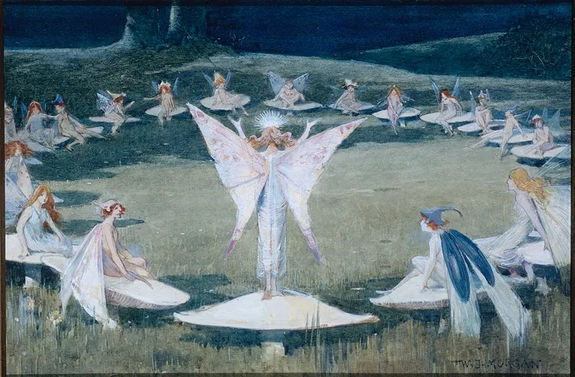
Illustration of a fairy by Luis Ricardo Falero, 1888
Fairy
Origin: Celtic/ European Folklore
Combination: human + wings
Classification: Insect
Other Names: Faerie, Fay, Fae, Fey, Fair folk, Pixie, Sprite
Associations: magic, fairy rings, trickery
Fairies are usually depicted as small humanoid creatures, often
women, with wings that are reminiscent of those of a butterfly or dragonfly, though some versions do not have wings at all. They are usually associated with magic and mischief, and are portrayed as both benevolent and malicious in varying tales. They exist in the folklore
and mythology of a multitude of cultures around the world, though
their characteristics and appearances can vary significantly.
Fairies are believed to inhabit forests, meadows, hillsides, and other natural landscapes. They are often associated with granting wishes, casting spells, and playing tricks on humans. They are said to have a close connection to the natural world and often have the ability to communicate with animals and plants. Some are claimed to have the ability to shape-shift, though it is not their defining characteristic.
One of the most famous fairies is Tinkerbell from the tale of Peter Pan.

Significant
Literary
Mentions
Medieval
• Legend of King Arthur
• Fable of Sleeping Beauty
Modern
• Tale of the Tooth Fairy
• The Faerie Queene – Edmund Spenser
• A Midsummer Night’s Dream – William Shakespeare
• The Adventures of Pinocchio – Carlo Collodi
• Peter Pan – J.M. Barrie
• Artemis Fowl – Eoin Colfer
Artistic
Representations
Throughout
History
Modern
Takes from
Cinema, TV,
& Music
Videos











